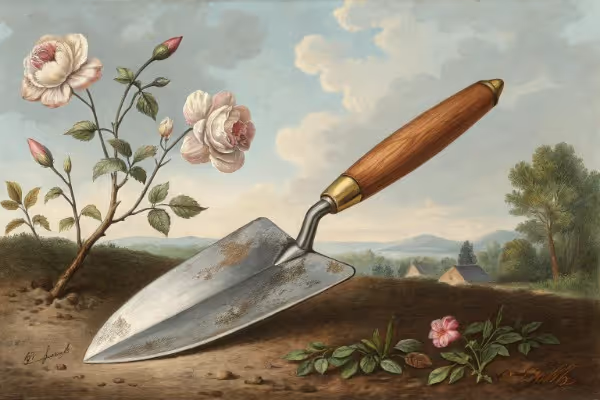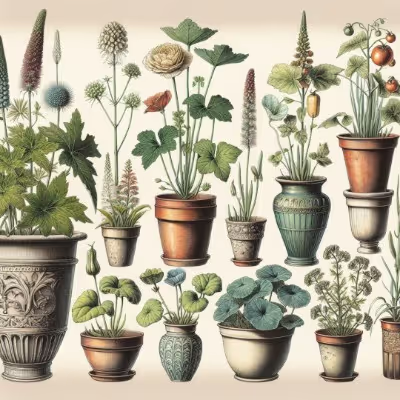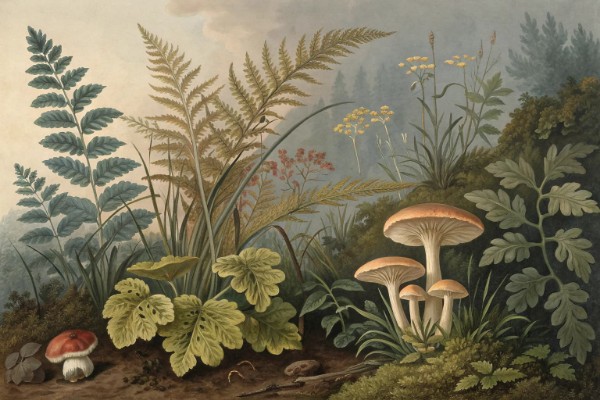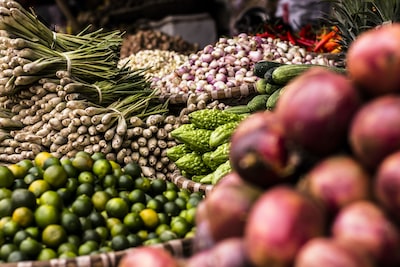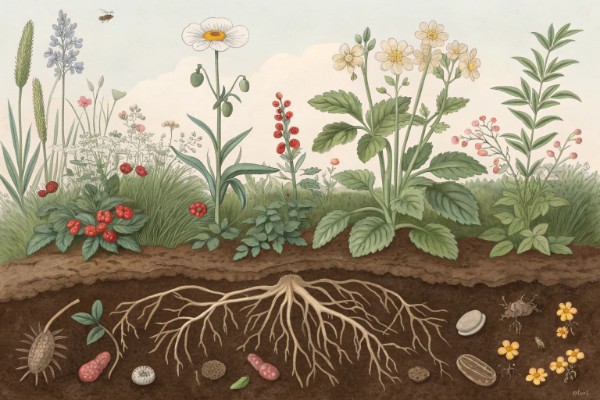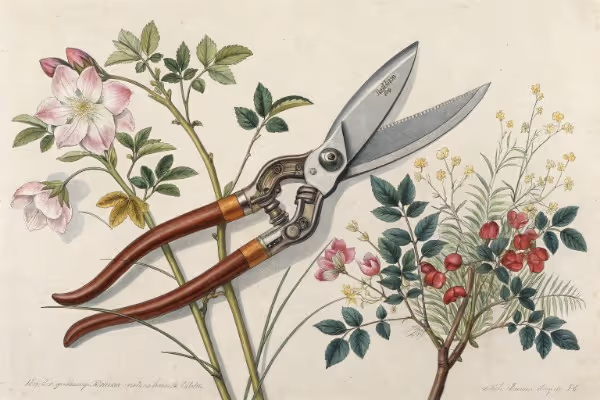Harnessing Moon Phases for Gardening: Fact or Folklore?
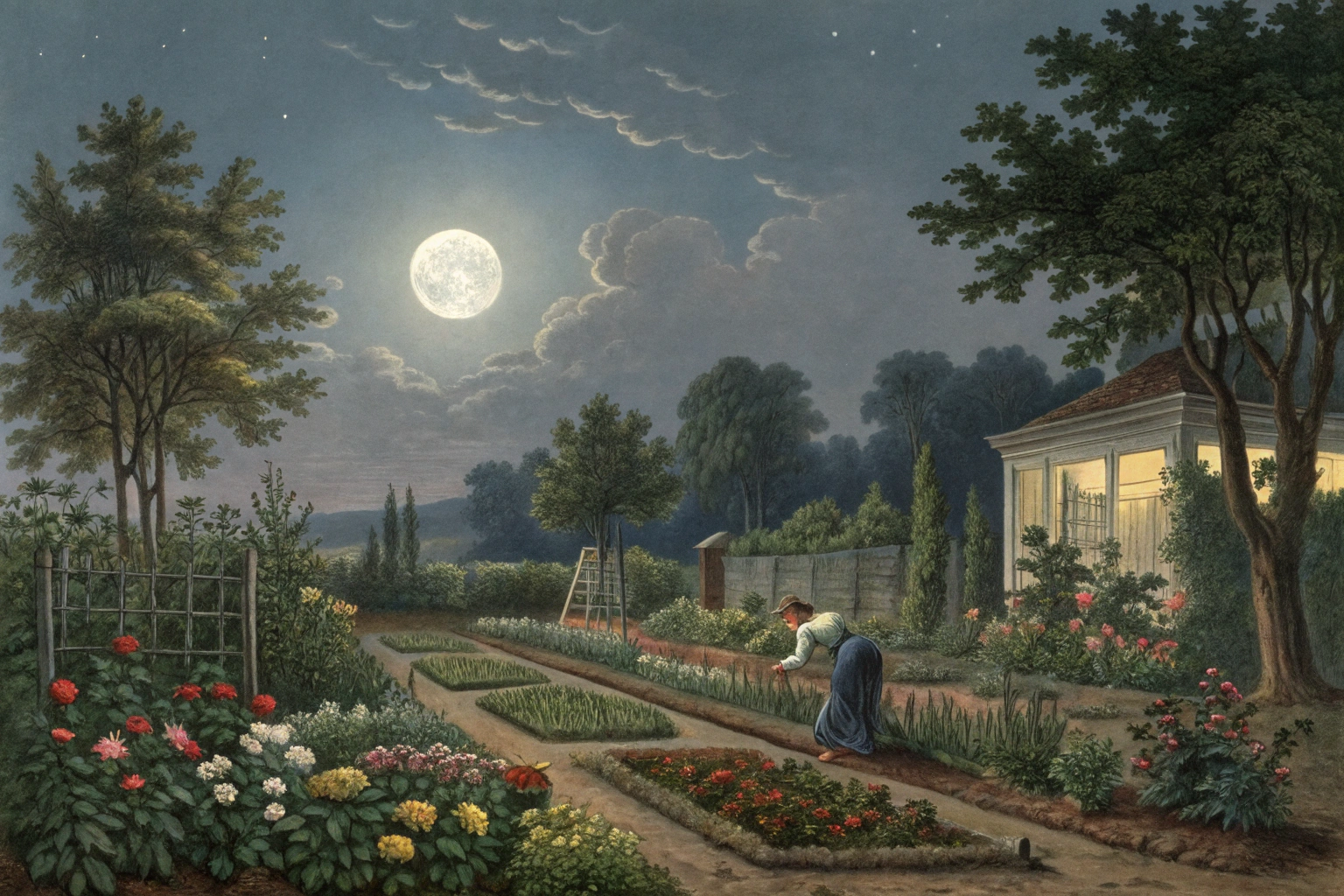
Moon phase gardening
Moon phase gardening works best with facts: track soil temp, day length, and local frost dates. In moon phase gardening, use the full moon’s bright nights to scout slugs and cutworms; hand-pick after dusk. For moon phase gardening, skip lunar-gravity watering myths—tests show negligible soil pull inland; use a moisture meter instead. Curious where lore meets lab? This piece cuts the noise and calls what’s real, so you’ll keep reading—and grow better crops.
Cheatsheet: Moon Phase Planting for Better Yields
🌑 New Moon: Sow Leafy Greens
- Action: Plant lettuce, spinach, chard, and herbs.
- Moisture: Soil absorbs water best now.
- Tip: Use this phase for transplanting seedlings.
🌓 First Quarter: Grow Above-Ground Crops
- Action: Sow beans, tomatoes, peppers, squash.
- Energy: Rapid root and leaf growth.
- Nutrient boost: Time fertilizing now.
🌕 Full Moon: Focus on Fruits & Blooms
- Action: Sow melons, berries, and flowering annuals.
- Tip: Prune and propagate for better rooting.
- Stat: 20% of surveyed gardeners report improved fruit set.
🌗 Last Quarter: Root Crops & Maintenance
- Action: Sow carrots, onions, potatoes, garlic.
- Best for: Weeding, composting, harvesting.
- Tasks: Clean tools, set crop rotation plans.
🛠️ Tools and Products You'll Need
- Calendar: Track moon phases.
- Basic garden tools: Trowel, hoe, fork.
- Quality seeds or seedlings
- Compost or organic fertilizer
- pH meter: Optional for soil checks.
🌱 Health, Nutrition & Self-Sufficiency
- Fresher greens, higher nutrient content
- Peak harvest timing means better taste and vitamin levels.
- Increased self-reliance with crop planning.
📈 Science or Folklore?
- Studies: Mixed results, but many gardeners observe better germination linked to lunar cycles.
- Best practice: Combine lunar timing with soil and climate knowledge for best results.
Moon phase gardening: fact, folklore, and what actually grows
I have sown lettuce by a waxing crescent and by a calendar that ignored the sky. Both crops fed my kitchen, but the story under the soil differed.
Patterns help us plan, and moon phase gardening offers one of the oldest patterns in horticulture. The trick is knowing which parts feed the roots and which parts feed the soul.
What the science says
On light, the numbers speak quietly. Full moonlight is weak compared with day, and its effect on photosynthesis is negligible.
Key stat: full moon illuminance is roughly 0.1 to 0.3 lux, while midday sunlight can hit 100,000 lux. Source: NASA and the U.S. Naval Observatory.
On gravity, the Moon drives ocean tides, but the force difference across a garden bed is tiny. Extension bulletins from University of Florida IFAS and Colorado State University report no consistent yield bump tied to lunar dates.
The Royal Horticultural Society trialed lunar planting and found no clear advantage for growth or harvest timing under controlled plots. Weather, soil temperature, and variety dominated outcomes.
Where tradition thrives
Old Farmer’s Almanac and biodynamic growers map farm tasks to phases with a steady cadence. Maria Thun’s biodynamic calendar remains a fixture on many benches.
The common rule set reads like a kitchen prep list. Sow leafy and above ground crops on a waxing moon, focus on fruiting crops as it nears full, shift to roots on a waning moon, and prune or weed near the last quarter.
The theory behind it blends sap flow, nocturnal moisture, and timing discipline. I respect the rhythm, even as I test its claims row by row.
My field results
Peas I sow on a moist waxing crescent often pop fast, but soil at 50 to 60 F (10 to 16 C) and steady moisture explain most of that speed. Carrots do fine in a waning gibbous if the bed sits loose and the top inch stays evenly damp.
Heat lovers ignore the calendar and answer to temperature. Tomatoes sulk until nights hold near 50 F (10 C) and soils stay above 60 F (16 C).
I’ve seen damping off drop when I sow during cooler, drier nights that happened to align with a waning phase. That looked lunar, but the forecast likely did the heavy lifting.
Practical playbook for moon phase gardening
- Use the moon as a planner, not a ruler. Let it set cadence, then check the forecast and your soil thermometer.
- Run side by side plots. Same bed, same seed lot, two sowing dates on different phases, everything else identical.
- Record like a grower. Germination percentage, days to emergence, final yield by weight or count, pest notes, and soil temps.
- Avoid extremes. Skip sowing during heat spikes over 90 F (32 C) or cold snaps under 40 F (4 C), regardless of phase.
- Irrigate to equalize. Aim for consistent moisture so water is not the confounder.
- Give it a season. One trial misleads, three trials teach.
Garden rule: use the moon for rhythm, use data for decisions.
Traditional lunar calendar cheat sheet
- New to first quarter: quick greens, brassicas, and annual flowers for foliage.
- First quarter to full: fruiting crops like beans, corn, cucumbers, tomatoes, and squash.
- Full to third quarter: root crops and perennials, plus transplanting and grafting.
- Third to new: pruning, weeding, bed cleanup, and compost turning.
What matters more than the moon
- Soil temperature: lettuce germinates best around 60 to 70 F (15 to 21 C) and stalls above 80 F (27 C). Source: university horticulture guides.
- Moisture at seed depth: the top 0.5 inch to 1 inch (1.3 to 2.5 cm) must stay evenly damp for small seeds like carrots and basil.
- Daylength: spinach bolts fast as days lengthen past 14 hours, moon or no moon.
- Variety choice: heat tolerant lettuces and crack resistant tomatoes beat timing tricks.
- Soil health: organic matter near 5 percent and balanced nutrients drive root vigor. The Moon will not fix dead dirt.
Shopping and tools for the curious
- Lunar wall calendar or app: look for clear phase icons, planting windows, and local time zone support.
- Biodynamic calendar: Thun-style guides offer day types for fruit, root, flower, and leaf tasks.
- Soil thermometer: a stainless probe with a clear dial beats guessing by hand.
- Weather station or reliable microclimate app: track frost, dew, and wind that sway germination and disease.
- Moisture meter or tensiometer: prevents overwatering seedlings on bright full-moon nights when you feel an urge to fuss.
- Red-light headlamp: preserves night vision for slug patrol without waking the garden with white light.
Common myths I hear
- “Moonlight feeds plants at night.” Full moonlight is too weak for meaningful photosynthesis, and circadian systems cue more from daylength than lunar glow.
- “Sap surges with lunar gravity.” Tidal forces on a tree or carrot are tiny at garden scale compared with capillary action and transpiration.
- “Pruning only at last quarter prevents bleeding.” Species physiology and season matter more, with maples and birches bleeding in late winter due to pressure changes.
- “Seeds only sprout on a waxing moon.” Temperature, oxygen, and moisture drive germination; phase timing at best rides shotgun.
A simple backyard experiment
- Pick one crop and one cultivar. Use a fresh seed packet.
- Prepare one bed uniformly. Amend, rake, and water to a consistent tilt.
- Sow half the row at first quarter and the other half at third quarter.
- Measure soil at seed depth twice a day for three days after each sowing. Log 2 inch (5 cm) temperatures.
- Count emergence daily. Calculate germination percentage and days to 50 percent emergence.
- Harvest and weigh separately. Compare yield per foot or meter.
Fascinating side threads
Nocturnal pollinators like hawkmoths respond to moonlight for navigation, which can shift activity in flowering beds. I see more sphinx moth traffic on pale evening primrose near bright nights, though bloom timing and fragrance likely matter more than the sky.
Tidal marsh growers time planting with water tables, but that is about geography, not phases alone. Photoperiod crops like garlic and onion set bulbs by daylength cues, and they ignore the Moon entirely.
My take on moon phase gardening
I use lunar phases as a tempo, the way a cook uses a metronome while salting by taste. If a waxing moon lines up with perfect soil and a forgiving forecast, I lean in.
If the weather misbehaves, I plant when conditions say go. The beds repay me for that humility.
References and further reading
- NASA and U.S. Naval Observatory on lunar light levels and phases.
- NOAA on tides and gravitational effects.
- Royal Horticultural Society lunar planting trial reports.
- University of Florida IFAS Extension and Colorado State University Extension on lunar gardening claims.
- Old Farmer’s Almanac planting by the Moon traditions.
- Maria Thun biodynamic calendar methodology.

Want smarter plant choices? 🪴
Frequently Asked Questions About Moon Phase Gardening
Which moon phases encourage seed sowing and planting?
Gardeners often start seeds and transplant annuals during the waxing moon, especially just after the new moon. Growth energy appears to increase as the moon waxes, which many believe supports leafy development. Root crops like carrots and potatoes often go into soil during the waning moon, as gardeners associate this time with stronger root establishment.
Does moon phase gardening affect watering and fertilizing routines?
Some gardeners schedule watering and fertilizing for different lunar stages. The waxing phase, particularly near the first quarter, often coincides with increased sap flow, so many opt to fertilize and water then. During the waning phase, moisture tends to recede into roots, prompting lighter watering. Scientific research remains inconclusive, but many gardeners report consistent results with this approach.
Can moon phase gardening influence pest and disease management?
Folklore suggests pruning or managing pests during the waning moon may slow regrowth and reduce the spread of disease. This period, especially during the last quarter, traditionally symbolizes a time of decline in plant energy, which some claim can help limit unwanted growth or insects. Evidence supporting this remains anecdotal, but gardeners often time pruning around these phases.
Are certain crops more responsive to lunar cycles than others?
Growers often notice that leafy crops such as lettuce, spinach, and herbs seem more responsive during waxing phases, while root vegetables like beets, onions, and turnips respond best during waning phases. Fruit crops and flowers usually get sown around the full moon, when lunar influence is believed to reach its peak. These practices reflect tradition rather than proven science.
How can I track the best planting times using moon phases?
A lunar gardening calendar or almanac can help you schedule tasks according to each moon phase. Many online calendars and gardening apps display both the lunar cycle and optimal activity windows. Align sowing, transplanting, and pruning with the relevant moon phases for your growing zone. Remember to also consider soil temperature, which ideally reaches 50°F (10°C) or higher for most seeds, regardless of moon phase.
Call it ritual or field-craft. I plant with the sky, but I answer to the soil. Moon phase gardening can set a rhythm that keeps you in the beds when it counts. The old playbook is simple: sow and transplant leafy and fruiting crops on a waxing moon, set roots and prune on the waning moon. Skip wind-whipped days and soggy ground, moon or no moon. Keep a notebook. Compare germination, vigor, and yield over a few cycles.
The science is thin, yet the habit sharpens attention. Let it guide timing, not dictate it. Your climate, season, and soil decide the rest. Use local calendars and monthly planners like what to plant in March and what to plant in October. Track schedules with a solid app for vegetable gardening. Build fertility, water smart, patrol pests. If moon phase gardening gets you out there on good days, that is a win worth keeping.
The Science Behind Lunar Gardening: What Researchers See, What They Don’t
Ancient sky-watchers tracked moon cycles for crop timing. Contemporary researchers still debate whether lunar gravity or light subtly nudges seedling roots, water, or microbes. While bold claims abound, peer-reviewed studies rarely find sweeping results, but some niche impacts do surface.
Soil Moisture Rhythms
Gravitational pull affects tides and underground water. Trials in loams and sandy soils show minor fluctuations in surface soil moisture linked to full and new moons. This can support seed hydration and germination during waxing phases, but the amplitude of change rarely tops a fraction of a percent.
Germination Patterns
Controlled lab tests on salad greens and beans found slightly higher sprouting rates (2-3%) for seeds sown during waxing crescent to first quarter, potentially due to higher overnight humidity and soil capillarity. Effects disappear under intense artificial lighting or very dry conditions.
Plant Growth and Sap Flow
Some dendrologists report small but measurable increases in sap pressure in certain hardwoods and vines close to the full moon. This may coincide with periods of rapid cellular elongation, suggesting pruning avoidance for fruit trees at this time to reduce bleeding.
Microbe and Pest Activity
- Mycorrhizae: Some research teams tracked root symbiotic fungi and noted peak root colonization in alignment with the waxing moon, possibly relating to moisture cycling.
- Slugs and cutworms: Field scouts recorded higher above-ground movement during bright moonlit nights, suggesting lower damage if direct seeding happens near the new moon.
Nutrient Uptake and Flavor
No rigorous studies link lunar cycles to measurable nutrient density or medicinal compound variation. Flavor and sugar content in fruits and leaves respond much more to temperature swings, day length, and irrigation than to phases of the moon.
Health and Resilience Factors
- Sowing with the lunar rhythm can help structure seasonal tasks, leading to more attention to timing, spacing, and watering—factors proven to bolster plant vigor and reduce pest damage.
- Following any consistent calendar reduces skipped plantings and staggered harvests, improving dietary diversity and food security on homesteads.
Summary
Avowed lunar gardening yields modest, crop-specific benefits. Any positive effects often ride alongside standard horticultural timing. Consistency and close observation drive better results than phase alone. Use lunar cycles as an additional layer, not a foundational rule.
Find out which plants will thrive in your garden!
Answer a few fun questions and get custom plant recommendations perfect for your space. Let’s grow something amazing together!

start your season
